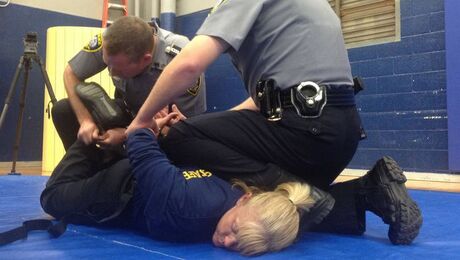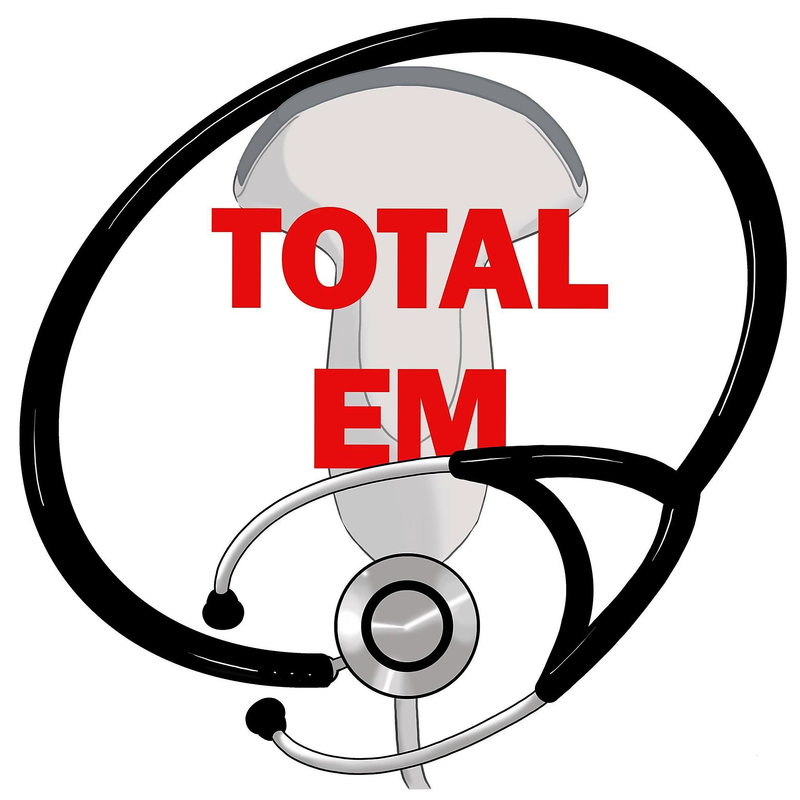|
Given recent events and a longstanding concern for certain restraint positions causing positional asphyxia, we took the time to dive into this subject more by discussing how and why this occurs along with the surrounding evidence.
There are multiple instances of suspected or confirmed positional asphyxia from restraints with the image above being from a 2013 case (image above was when law enforcement wanted to show proper technique) and most recently George Floyd (ABC, CBS, and CNN reports regarding autopsies).
Positional asphyxia, or difficulty breathing due to how someone is being held, carries the potential of being lethal. While it is not always related to restraints, improper restraints are a recurring concern. What makes it so dangerous? Simply, it’s a combination of factors: metabolic acidosis, position, and decreased blood flow are three main elements. Metabolic acidosis can occur in states of extreme stress or exertion (such as with certain drug use like methamphetamine and cocaine, prolonged exercise like marathons, or fighting against restraints). In the medical setting with combative patients, excited delirium and excess catecholamines are common causes and carry with them their own risks. During this metabolic acidosis, the body will attempt measures to rid itself of the abnormal pH including “blowing off” the acid as carbon dioxide (CO2) which itself is an acid. This becomes complicated by physical restraint. Certain positions, especially laying prone (face down), can make it harder to breathe. Add in restraining the arms behind someone and pressure to the back to further limit lung expansion (commonly seen in "hogtie" positions commonly referred to as hobble or prone maximal restraint position [PRMP]). If the person restrained cannot take a deep enough breath, they cannot blow off that CO2 fast enough and the acidosis can worsen. Then there is an issue with blood flow. Manual compression of arteries including to the head and neck further decrease blood flow. Not enough blood to vital organs including the brain makes it harder for them to function and help with breathing as well as numerous other functions. Eventually, this combination of these factors will lead to unconsciousness. Once unconscious, the body will relax and those muscles that were helping keep the chest expanded and protecting the arteries to stay more open will collapse. The lack of guarding will lead to less and less oxygenated blood and worsening acidosis. What this means is that a person left in such a position for even a short length of time can be potentially lethal. Even with proper medical care, resuscitation is extremely difficult and often unsuccessful. It is a common misconception that when someone says, “I can’t breathe” that they indeed are breathing adequately. It is common for people to take the "I can't breathe" to literally only mean respiratory arrest or instances of complete occlusion of the airway such as with choking. However, any time someone says they feel like the are unable to breathe adequately, this should be treated first as an immediate life threat until proven otherwise. How does positional asphyxia differ from traumatic asphyxia? Simply, traumatic asphyxia is a cardiovascular phenomenon resulting from a sudden dramatic increase in intrathoracic pressure from severe compression of the chest. Blood is forced back through the venous system causing significant facial edema and jugular venous distention (JVD). It will lead to cyanosis of the upper extremities, head, and neck with petechiae (microvessel rupture) often being present. This type of asphyxia is most commonly seen during motor vehicle collisions (MVCs), industrial accidents, and farming accidents where there is a significant force being applied to the chest and usually very quickly. Think of someone's chest hitting the steering wheel or a tractor landing on a person's chest. Strangulation is also different from asphyxia. It is usually seen as mechanical or vascular. Usually, in mixed martial arts (MMA) the technique is vascular as it is much faster than mechanical strangulation. The goal in MMA is to cause a quick loss of consciousness or force the opponent to quit ("tap out"). Mechanical strangulation is usually seen with hanging or throttling. These will usually leave evidence seen on autopsy such as edema and contusions to the area strangled, edema and crush injury to the larynx or trachea, fracture of the hyoid bone, and petechiae to the eyes. Using one of the examples above, George Floyd, one of his initial autopsy reports said "no physical findings that support a diagnosis of traumatic asphyxia or strangulation" but that is not a surprise given the incident surrounding his death. They would not be present as that is not what the concern in his death but rather positional asphyxia which is what another autopsy reported supported. It was mentioned that "weight on the back, handcuffs, and positioning were contributory factors because they impaired the ability of Mr. Floyd’s diaphragm to function." Now that we covered how positional asphyxia can occur, let us move on to some of the evidence. Quite a bit of the evidence is older with one example being a restrospective case study of deaths in police custody and in the community dating from 1998. In this, they discuss how excited delirium combined with positional or postural holds can lead to unexpected death. Drugs, such as cocaine, were also often present but at levels not considered to be lethal. Another older paper from 1993 was case reports involving 11 deaths of men restrained in a prone position by police. Three were considered psychotic and the rest were considered delirious from drug use. All but two died in a "hogtie" position. There are some who contribute other factors than position as being the main cause of death. A 1998 paper looked more into the "hogtie" position. They believed from their findings that other factors contributed to the death that were more important including drug use, physiologic stress, hyperactivity, hyperthermia, catechol hyperstimulation, and trauma from struggling. Additionally, the concluded that body position alone does not cause hypoventilation, respiratory compromise, or positional asphyxia in the hogtie custody restraint position. A 1997 clinical study was performed on this subject. They studied healthy individuals and found "no evidence of hypoventilatory respiratory failure or asphyxia as a direct result of body restraint position in healthy, awake, nonintoxicated individuals with normal cardiopulmonary function at baseline." More recently, a 2013 study again took healthy individuals to see if weight caused significant changes that led to cardiovascular or hemodynamic compromise. Once again, the researchers found no significant changes. While weights up to 100 pounds were used, this was only for a few minutes. It is beneficial to look at the evidence from both sides, but we must remember that there are definitely limitations. For example, the people in the studies were healthy and in a well controlled environment where there was no physical exertion, physiologic stress, intoxication, or trauma. They also did not have underlying cardiovascular problems. In the study with weights, there were large weights that would distribute throughout the entire back, limiting the pounds per square inch (PSI). A low PSI and of a weight far less than what may be used to restrain an individual in the field is unrealistic. While it would be difficult to replicate a study and include these limitations, they should still be recognized for what they are: limited studies in healthy individuals in controlled settings. Also mentioned from the studies is that most of these people are under some form of stress. This is quite common and does not excuse the position. A position that can compromise appropriate physiologic responses is still dangerous. The other factors contributing to the deaths mentioned should only increase our concern of its ability to worsen a dangerous situation. We should not take the evidence to mean that these are safe positions, but rather that alternative forms of restraint should be used. Any time these dangerous restraints are used, it should only be for a minimal time and to allow for a safe transition to better forms of restraint all while monitoring those restrained closely. We must act as advocates to help encourage safe practices. Our goal should be to continue keeping our patients and those in police custody safe and prevent avoidable deaths. Let us know what you think by giving us feedback here in the comments section or contacting us on Twitter or Facebook. Remember to look us up on Libsyn and on Apple Podcasts. If you have any questions you can also comment below, email at [email protected], or send a message from the page. We hope to talk to everyone again soon. Until then, continue to provide total care everywhere.
0 Comments
Leave a Reply. |
Libsyn and iTunesWe are now on Libsyn and iTunes for your listening pleasure! Archives
August 2022
Categories |
||||||


 RSS Feed
RSS Feed